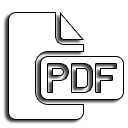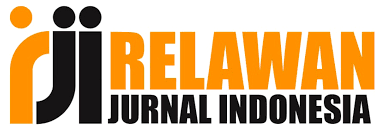A Antibacterial Activity Test of Laban Bark Ethanol Extract (Vitex pubescens Vahl) against Escherichia coli bacteria
DOI:
https://doi.org/10.33859/jpcs.v1i1.36Abstract
Background: In the world, 800.000 children die every year due to diarrheal diseases. Chronic diarrhea is usually caused by a bacterial infection, one of which is E. coli. Empirically, Dayaknese in Sampit, Central Kalimantan consuming Laban bark to treat diarrhea and dysentery. Through this research, people get scientific information about Laban wood as an alternative herbal medicine for treating diarrhea.
Objective: To find out whether Laban bark can inhibit Escherichia coli bacteria and to determine the minimum inhibitory concentration in Laban bark extract that can inhibit Escherichia coli bacteria.
Methods: This type of research used true experimental design with research post test only control group design. The research subjects were Escherichia coli cultured on Muller Hinton Agar (MHA) media and Laban bark extract with 3 different concentrations using the disc diffusion method. This study had 2 control groups and 3 treatment groups, DMSO as negative control, ciprofloxacin as positive control and ethanol extract of Laban bark with concentrations of 25%, 50%, and 75%. Inhibition zone diameter results were analyzed quantitatively in 3 replications.
Results: The results showed that the concentrations of 25%, 50% and 75% of the extract had bacterial inhibition, in the very strong antibacterial category.
Conclusion: The ethanol extract of Laban bark can inhibit the growth of Escherichia coli with an minimun inhibitory concentration 25%, which is in the very strong inhibition category.
Keywords: Disc diffusion, Escherichia coli, Laban bark (Vitex pubescens Vahl)
References
Adelina, K., Wardenaar, E., & Sisillia, L. (2014). Kajian Etnobotani dan Fisiko Kimia Kulit Kayu Laban ( Vitex pubescens Vahl) di Desa Lape Kecamatan Kapuas Kabupaten Sangau Kalimantan Barat. Jurnal Hutan Lestari, 2(1), 92–99.
Adila, R., Nurmiati, & Agustien, A. (2013). Uji Antimikroba Curcuma spp . Terhadap Pertumbuhan Candida albicans , Staphylococcus aureus dan Escherichia coli. Jurnal Biologi Universitas Andalas, 2(1), 1–7.
Anggreli, C., Anggraini, D., & Savira, M. (2015). Gejala Penyerta Pada Balita Diare Dengan Infeksi Entero Pathogenic Escherichia coli (EPEC) di PuskesmasRawat Inap Kota Pekanbaru. Jom Fk. Retrieved from https://media.neliti.com/media/publications/188044-ID-karakteristik-pada-balita-diare-dengan-i.pdf
Armedita, D., Asfrizal, V., & Amir, M. (2018a). Aktivitas Antibakteri Ekstrak Etanol Daun,Kulit Batang,Dan Getah Angsana (Pterocarpus Indicus Willd) Terhadap Pertumbuhan Streptococcus Mutans. Odonto Dental Journal.
Faure, C. (2013). Role of Antidiarrhoeal Drugs as Adjunctive Therapies for Acute Diarrhoea in Children. International Journal of Pediatrics. https://doi.org/10.1155/2013/612403
Mastura, Barus, T., Parpaung, L., & Simanjuntak, P. (2017). Senyawa Fenolik dari daun Halban ( Vitex pinnata sebagai anti Oksidan. Prosiding Seminar Nasional Kimia, 133–136.
Muttaqin, G. M. E., Hartoyo, E., & Marisa, D. (2016). Gambaran Isolat Bakteri Aerob Diare pada Anak yang Dirawat di RSUD Ulin Banjarmasin Tahun 2015. Berkala Kedokteran.https://doi.org/10.20527/jbk.v12i1.360
Ngajow, M., Abidjulu, J., & Kamu, V. S. (2013). Pengaruh Antibakteri Ekstrak Kulit Batang Matoa (Pometia pinnata)terhadap Bakteri Staphylococcus aureussecara In vitro. Jurnal MIPA.https://doi.org/10.35799/jm.2.2.2013.3121
Savitri, E., Fakhrurrazi, F., Harris, A., Erina, E., Sutriana, A., & Lubis, T. M. (2018). Uji Antibakteri Ekstrak Daun Kelor (Moringa oleifera L.) Terhadap Pertumbuhan Bakteri Staphylococcus aureus (Antibacterial Activity Test of Moringa oleifera L. Extracts on Staphylococcus aureus). Jurnal Ilmiah Mahasiswa Veteriner, 2(3), 373–379.
Sirait, E. U., Khotimah, S., & Turnip, M. (2014). Ekstrak buah Laban ( Vitex pubescens Vahl ) sebagai penghambat pertumbuhan Salmonella thypi dan Staphylococcus aureus. Protobiont, 3(3), 40–45.
Suryati, N., Bahar, E., & Ilmiawati, I. (2018). Uji Efektivitas Antibakteri Ekstrak Aloe vera Terhadap Pertumbuhan Escherichia coli Secara In Vitro. Jurnal Kesehatan Andalas. https://doi.org/10.25077/jka.v6.i3.p518-522.2017
Tirayo,A. J., Munir, M. A., & Hutasoit, G. A. (2016). The Comparison Of Inhibitory Effect Between Antiseptic Soap With Betel Leaf Extract ( Piper Betle Linn ) On The Growth Of Escherichia Coli. 3(3), 31–39.
Tiwari, P., Kumar, B., Mandeep, K., Kaur, G., & Kaur, H. (2011). Phytochemical screening and Extraction: A Review. Internationale Pharmaceutica Sciencia, 1(1), 98–106.
Wells, B. G., DiPiro, J. T., Schwinghammer, T. L., & DiPiro, C. V. (2016). Pharmacotherapy Handbook 7th Ed. In Clinical Medicine of the Dog and Cat: Third Edition.
Downloads
Published
How to Cite
Issue
Section
License
Copyright (c) 2020 Journal of Pharmaceutical Care and Science

This work is licensed under a Creative Commons Attribution 4.0 International License.
















